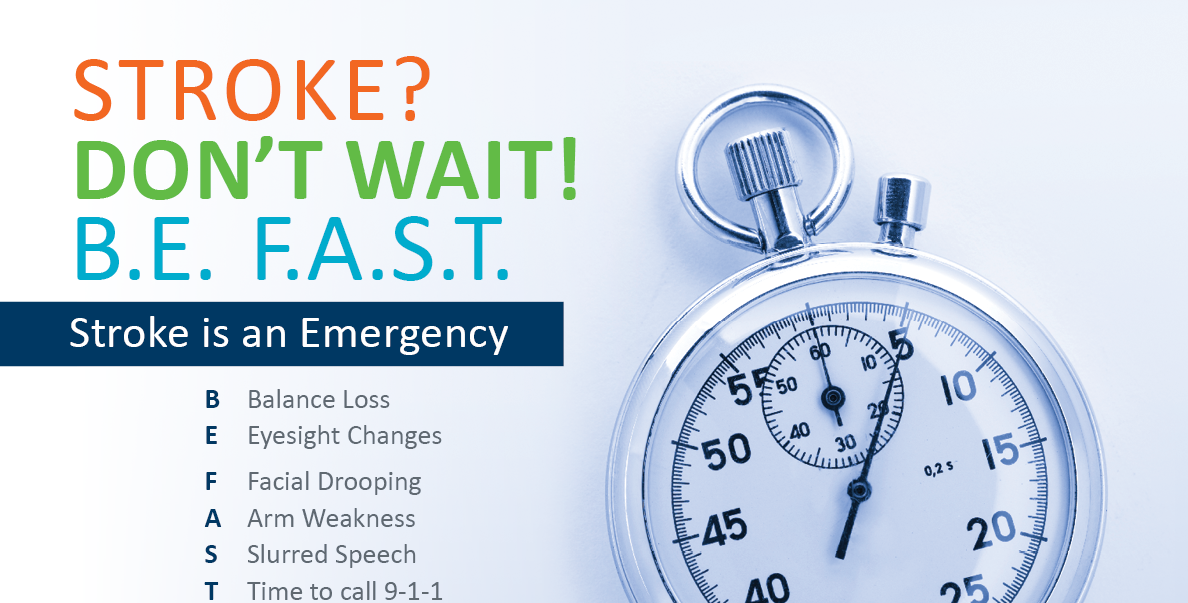Cardiovascular Health
- Cardiovascular Health Home
- CVH Data and Trends
- CVH Programs & Resources
- Minnesota 2035 Plan
- Minnesota Stroke Program
- About Us
Learn More
Related Topics
About Stroke
Nearly 800,000 people in the United States have a stroke every year. In Minnesota, stroke is the sixth leading cause of death and one of the leading causes of disability.
Stroke occurs when the blood supply to the brain is suddenly stopped. There are two main types of strokes. The majority of strokes are ischemic strokes, which occur when a clot cuts off blood flow to the brain. A hemorrhagic stroke is less common and occurs when a blood vessel ruptures in the brain.
Transient ischemic attacks (TIA), often called a mini stroke, occur when blood flow is temporarily disrupted in the brain. A TIA should not be ignored as they are often the first warning sign of a stroke.
Stroke is an emergency and recognizing the signs and symptoms of stroke can save a life!
Signs and symptoms
Learn and share the warning signs of stroke. Don’t wait! B.E. F.A.S.T. Call 911 at the first sign of stroke.
Balance loss - Is coordination or balance suddenly difficult?
Eyesight change - Is there a sudden change in vision?
Facial drooping - Does one side of the face droop or is it numb?
Arm weakness - Is one arm weak or numb?
Slurred speech - Is speech slurred, are they unable to speak, or are they hard to understand?
Time to call 9-1-1 - If the person shows any of these symptoms, even if the symptoms go away, call 9-1-1 and get to a hospital immediately.

Other signs of stroke are “The Suddens”:
- Sudden numbness or weakness of the face, arm or leg, especially on one side of the body
- Sudden confusion, trouble speaking or understanding
- Sudden trouble seeing in one or both eyes
- Sudden trouble walking, dizziness, loss of balance or coordination
- Sudden, severe headache with no known cause
Treatment
Call 911 and get to the hospital at the first sign of stroke so that you can be evaluated and receive treatment right away. Timely treatment may decrease the likelihood of disability or death caused by stroke.
Ischemic strokes may be treated with a clot-busting drug if given within 4.5 hours after the symptoms start. Clot-removing endovascular treatment may be available up to 24 hours after symptom onset for some large vessel strokes. Endovascular treatment is a surgical technique that can physically remove a large blood clot from a blocked artery in the brain.
Risk Factors and Stroke Prevention
After having a stroke, your risks of having another stroke are high. However, there are things you can do to try to lower your chances of having another stroke.
Risk factors that can be changed (lifestyle changes)
- Manage your blood pressure. Learn more about knowing and managing your blood pressure numbers by visiting About High Blood Pressure.
- Manage your cholesterol levels. For more information, visit the American Heart Association's What is Cholesterol.
- Stay active by using ideas from Physical Activity, eat healthy meals, and maintain a healthy weight.
- Quit using tobacco. Visit the Minnesota QUITPARTNER or call 1-800-QUIT-NOW (784-8669) for tools and support to quit tobacco.
- Manage your diabetes. People with diabetes can lower their risk of stroke by controlling their blood glucose, blood pressure and cholesterol.
- Take all of your medications as prescribed.
- Atrial Fibrillation (AFib)–a type of irregular heartbeat– increases your risk for recurrent stroke. If you have AFib, take your medications as prescribed by your doctor.
- Attend your follow up appointments as scheduled.
Risk factors that cannot be changed
- Age: The normal aging process increases stroke risk. The risk of stroke doubles every 10 years after age 55.
- Sex: Men are more likely to have a stroke, but a higher number of women have and die from strokes every year. This is because, on average, women live longer than men and strokes are more common as you get older.
- Race/Ethnicity: African Americans are 1.5 to 2 times more likely to have a stroke than Whites. This is because African Americans experience higher rates of diabetes, obesity, and high blood pressure.
- Family History: A person is more likely to have a stroke if they have a family member who has had a stroke. Family members share genes, cultures, lifestyles, and environments that together may increase their risk of stroke.
What we're doing
The Minnesota Stroke Program is committed to reducing the burden of stroke in the state through raising stroke awareness in the community, providing continuing education to health care providers, and working to improve the entire system of care for stroke patients. For more information please visit the Minnesota Stroke Program. Please visit our Every Second Counts: Heart Attack and Stroke Awareness Campaign for free messaging materials.